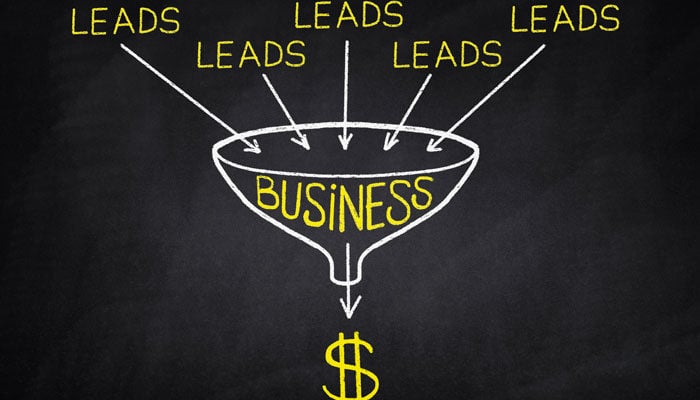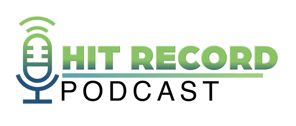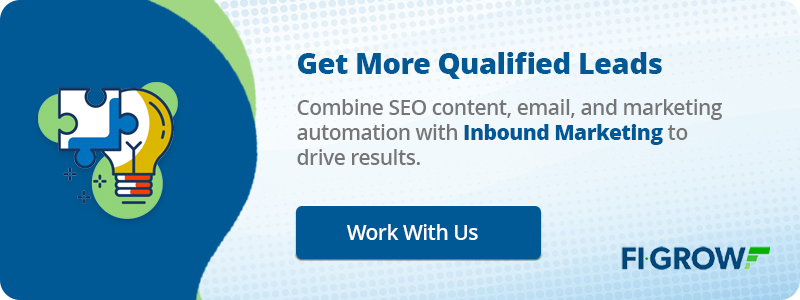Episode 75 - Making Lead Capture Successful for Your Bank or Credit Union


Don't Miss An Episode, Subscribe Now

In this podcast, Meredith Olmstead, CEO and Founder of FI GROW Solutions, and Danielle Fancher, the Director of Sales, discuss effective strategies for capturing leads on websites of banks and credit unions. They emphasize the complexity of online financial product applications and the high rate of abandoned applications. The conversation highlights the importance of combining automated and personalized follow-up methods to convert abandoned applications into completed transactions. They also explore how various techniques, such as prompt email responses, phone calls, and personalized emails, significantly enhance lead conversion rates.
Key Takeaways:
-
Lead Capture and Follow-up: Efficient lead capture isn't just about encouraging users to start an application; it's crucial to actively follow up on applications that aren't completed. This involves a mix of automation for immediacy and personal follow-up for effectiveness.
-
Importance of Personalized Communication: Conversion rates significantly improve when financial institutions use personalized communication strategies. These include quick phone calls and customized emails, which make potential customers feel valued and supported.
-
Impact of Team Involvement and Incentives: Institutions with dedicated, incentivized teams handling leads tend to achieve higher conversion rates. Engaging the team in active sales efforts, supported by automation, leads to better customer engagement and higher success in closing applications.
Transcription:
Meredith Olmstead:
Hi there. I'm Meredith Olmstead, CEO and Founder of FI GRO Solutions. We are a digital marketing and sales consulting agency and we work exclusively with banks and credit unions. And I am here with Danielle Fancher, she's our director of sales. Say Hi Danielle.
Danielle Fancher:
Hello.
Meredith Olmstead:
And Danielle and I were having a really interesting conversation about lead capture on a bank or a credit union's website. And really we were talking about this because there are so many different definitions of what this looks like and whether or not banks and credit unions are doing it, and then also if they're doing it successfully or in a way that leads to actual new accounts, new members, new customers and applications submitted and all these things.
So I was like let's hit record and talk about this a little bit more because, so the first question I guess really is are you capturing leads on your website currently? On your bank or credit union website. And a lot of people can say easily yes or easily no. But really a lot of those leads or a lot of that effort falls somewhere in the middle of yes and no, right? So Danielle, when you're talking about is a bank or a credit union successfully capturing leads, it's kind of like this abandoned cart approach to consumer products really. But we're talking about financial products, which is so much more complicated. So unpack that a little bit for our listeners. What do you mean by capturing product or new account leads for a bank or credit union?
Danielle Fancher:
Yeah, so oftentimes LOS systems, lending origination systems, as soon as you complete an application, you get some type of automated email from the LOS that says thank you for your application. But more times than not, there are several people that don't actually make it through the complete application process. And so by being able to have lead capture forms on your website in front of the actual loan application or the new account application, we're able to go in and see okay, who started but didn't finish? And then we have to determine what are we going to do with that information.
So I'm sure that many of you have started an application at a large financial institution or added a product to a cart to purchase something, and you just don't quite complete the process. And you quickly get an email that says, hey, did you forget something? Do you remember those shoes that you wanted to buy? Or, hey, I see you started the mortgage application but you didn't finish it. And so it's really important at a financial institution, a community bank and a credit union that we are doing that exact type of follow up. And so a lot of times you can do that through complete automation, but when it's done really, really well, you're going to do it with a combination of sales efforts like phone calls and automation.
Meredith Olmstead:
Gotcha. So I remember going to... I was at a financial brand probably in 2019, maybe a little bit pre-Covid and I remember having a Google representative explain that even with their tracking for financial institutions, starts and finishes on applications for third parties or on applications that lived on people's websites, 75% of applications back in that timeframe, which was not that long ago, four or five years ago, were started on one device and finished on another. So it was virtually impossible even for Google to fully successfully track through a third party's application the start and the finish of it, because a lot of people are starting on their phone and finishing on their desktop or starting on their desktop and finishing on their iPad or whatever it is. Or starting on one day and finishing five days later. So it's like these really, really high abandonment rates that kind of come through that are very, very difficult to track.So you're saying, Danielle, that product capturing leads isn't just about sending people to the applications and crossing your fingers and hope that they finish that application or they're saving their application on the way. But it's also capturing those leads initially so that you can follow up regardless of where they might drop off on that application. So what are some of the factors? You said that the most successful lead capture involves follow up by automation, but also by a salesperson or by an individual at the institution, either the bank or the credit union. What are some of the factors that influence how successful that lead follow-up is? I know probably timing, the quality of the lead follow-up. What do you see that helps those sales efforts do better?

Danielle Fancher:
Yeah. So you have to have a combination of efforts here, and I work with several different of our clients for this exact same thing. And the best way that you're going to bump leads in your conversion rate is to respond quickly to leads. So email automation is extremely important. We definitely want to make sure that an email gets out very quickly after the cart is abandoned that says, hey, it looks like you started but didn't finish. Introduce them to one of your team members. We do this all the time through a series of automated sequences.But that can't be the only effort that we're making. Someone has to be there to pick up the phone. If you are not picking up the phone, I promise you that your competitors are. I've worked with several different financial institutions that say, hey, someone applied for a mortgage with us and then within 10, 15 minutes later, one of our competitors called them and they moved their mortgage application over there because they had better rates. That's not a coincidence. That other financial institution is purchasing credit bureau data to get that information. But what was so important is that they didn't just send out an automated email. They had an actual sales rep pick up the phone very, very quickly after that process was started and gave them a call.And it's very much about that relationship. So if someone can hear your voice, you're genuinely concerned about saving them money or offering them a product or service at your financial institution and walking them through that process and educating them, which is what credit unions and community banks are about, you have an advantage over the other financial institution that kind of just sets and waits and maybe the day after or a few days later, they get an automated email. Maybe someone follows up, maybe they don't. And so you're going to see a huge significance in a lead going to an actual deal being closed one is what we call that. So it has to be through a series of efforts, not just a single automated effort.
Meredith Olmstead:
Gotcha. I mean, I think a lot of times we see when we're starting with new clients and we're talking to them about sales enablement, they'll say, oh, well, our salespeople are following up. And then we're like, we want to dig in a little bit. Okay. Tell us a little bit more. What does their follow-up include? Well, they sent an email or they made one phone call, but a lot of times it's one. I love that when we hear that. They sent an email and I'm like, okay, no. That's not following up. One email in the digital space is not following up. It takes four emails, marketing emails typically to ensure that one of four are opened, right? Because only about 25% on average of emails even get opened. And so at the very minimum, you should be sending four follow-up emails at the very least in terms of digital communication.So in terms of success rates, if people are like, well, let me just look and see how much of the leads getting generated, what percentage of those can we anticipate would actually turn into a new application, a new loan, a new customer or member? What's a good conversion rate in the digital space?
Danielle Fancher:
Yeah. So I actually did some research on this and I read an article on Podium that was published in 2023. And again, this is going to vary from industry to industry, but an important baseline it says is generally speaking, an average lead conversion rate is around 7%. So if your company has a rate of more than 10%, you are sitting in a good position. Anything under 3% is a poor rate. Again, you have to be capturing those leads through some type of lead generation, some type of form on your website in order to understand and have a good idea of what that conversion rate could be.
Meredith Olmstead:
Gotcha. And so then we have had clients sometimes... Because what we really try to push people to do is either come up with a team of people that can split up digital leads or we'll create a new role that is only really focused on digital leads for clients, and so we do that. It really varies depending on the internal resources and how they're budgeting and their priorities. But we've seen success in both approaches.But generally if we have clients that are automating it all, so like say we have somebody who doesn't have the staffing to do actual, personalized follow-up versus somebody who does, what are the differences in results that we've seen with just financial institutions? It's not a large sample. We are a very customized agency. We don't have a huge number of clients. We're not talking about hundreds of clients that we're comparing, but a few, what are you seeing?
Danielle Fancher:
Yeah, so we have a client who had someone kind of in the position of working leads that continuously kind of got pulled into other directions. It wasn't a big priority. Most of the efforts were automated efforts. There were no phone calls being made. And what we saw is in that period of time that they were only using automation, we saw a conversion rate of less than 1%.
Meredith Olmstead:
Very low. Yeah.
Danielle Fancher:
Whereas I have another client that I work with, a very engaged team. The team is incentivized, so they have a little bit of skin in the game. They are actually paid for their sales efforts, and we saw a conversion rate of over 10%. And so that's the difference and those efforts were a combination of picking up the phone and calling or texting based on the customer member's preference, and also a series of four automated emails. And what those automated emails look like are just one-to-one emails that we build out for each client, and it really looks and appears like I am sending you a personalized email, introducing myself and educating you on the services that we provide. And I'm letting you know, hey, I'm here to walk you through this.
That is a huge difference whenever you combine actual sales activities and sales efforts in a combination with people that are really driven and in the right seat and incentivized compared to just solely automation.

Meredith Olmstead:
Nice. All right. Well, I mean the results speak for themselves really. So it's good to know that there's definitely some real obvious overlap in terms of results when we're talking about people actually getting on the phone, sending a text message, sending personalized emails. It's funny. Even if people aren't picking up their phones when people are calling, you're leaving a voicemail, then you're sending an email. They know there's an actual human there. They sound trustworthy. It came from the institution that they're familiar with the brand. And so that is kind of opening... It sounds like it's opening the door a bit to finishing those applications and actually closing those new loans or new accounts.
Awesome. Well, very interesting nuances between how you capture leads and then also how you follow up. Super useful. Thank you so much, Danielle. I appreciate you sharing all of your tips. If you're interested in learning more about digital marketing or sales for your bank or credit union, please visit us at FIGROW.com. We have lots of other podcasts about this topic as well as case studies for what we're seeing work for other financial institutions. So we'd love to have you join our network and come and learn more. And otherwise, let's just all get out there and make it happen.







Blog comments